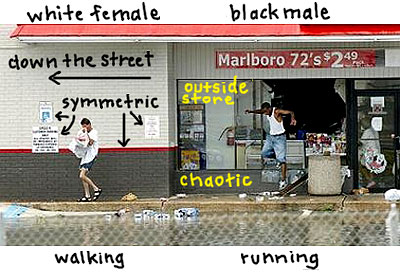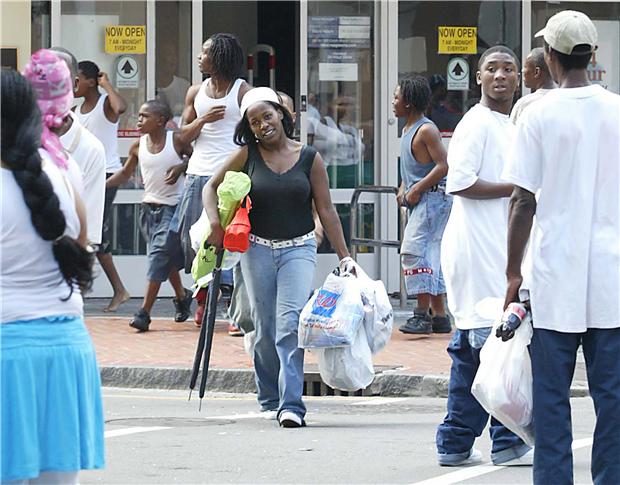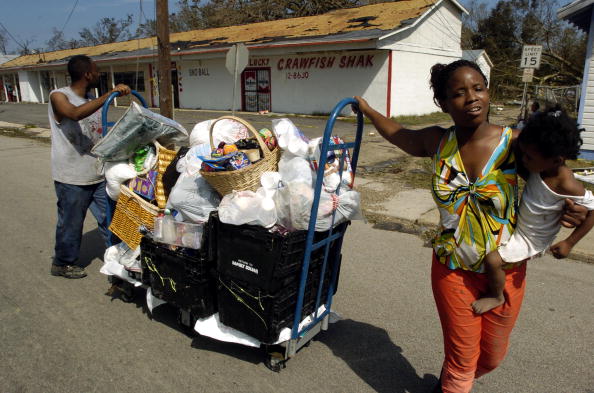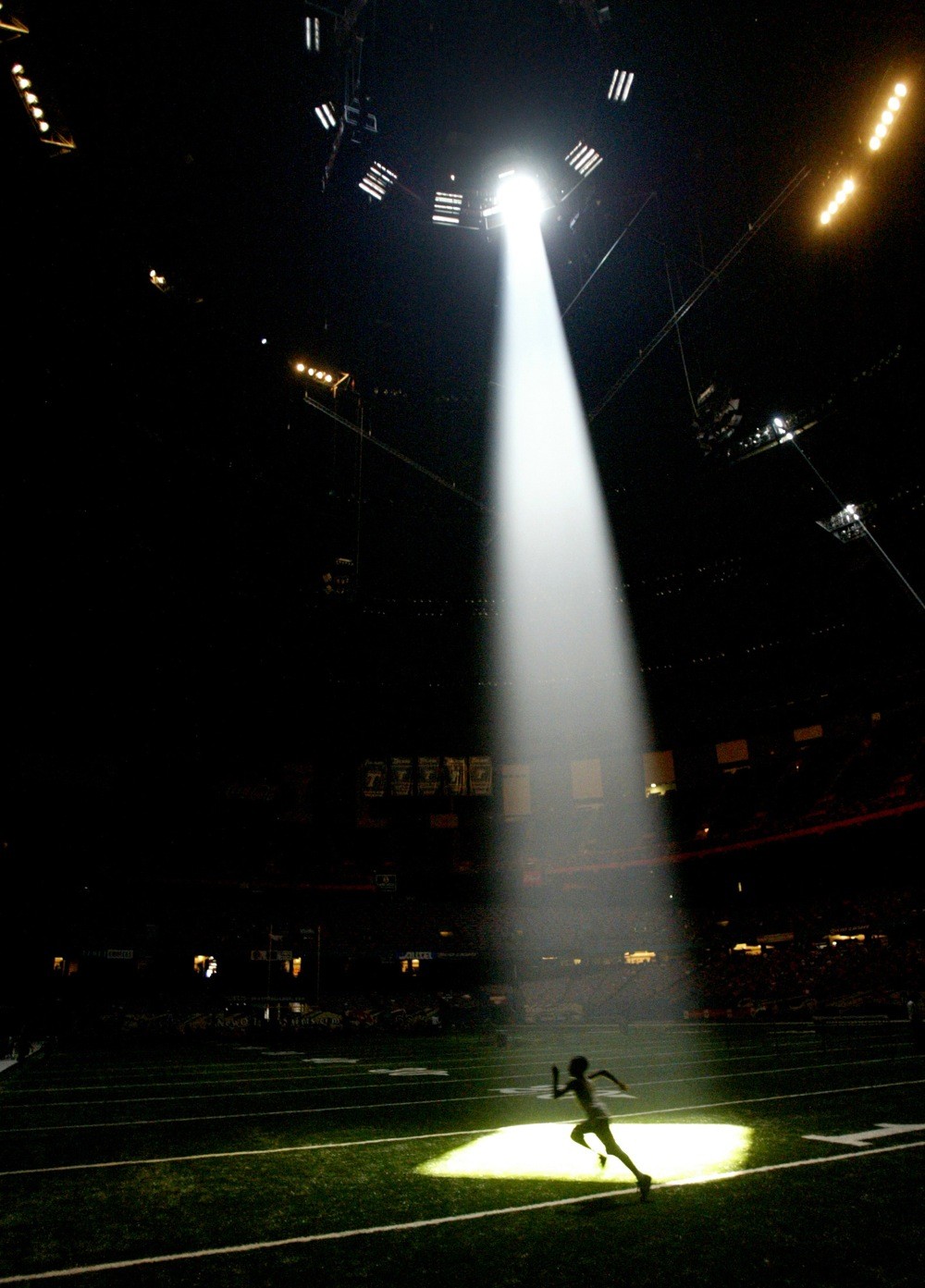Notes
Since Katrina, What’s So Different? — Outside the Crawfish Shak

I know a lot of Katrina imagery is re-circulating on the tenth anniversary of this triple disaster: the environmental one, the humanitarian one and the political one. One thing that characterizes a good deal of these retrospectives is the sense that: that-was-then-and-this-is-now. With all due respect, what stands out to me more than anything, as I look back on our posts from August and September ’05 (before the crisis coverage vanished), is how much the racial schism then mirrors the racial schism today.
We published the following post, led by the photo above, on September 1, 2005. One of our most read ever, it addresses African-Americans characterized as looters when access to supplies, following the disaster, were a matter of survival. There’s that, and the assumption they’ve taken goods in the first place. (Note: please excuse the fuzziness of the photo with my annotations.)
Following on my post yesterday, and piggybacking on today’s exceptional visual analysis by Wonkette (Finding vs. Looting — link; Loot, Find, Rinse, Repeat — link), I’m still thinking about the racial bias in the Katrina coverage. On Tuesday, it was my hope that Katrina might actually help raise consciousness and consideration of the neglected topics of poverty and racism. By today, however, I was having my doubts.
Without dwelling on the examples Wonkette covered so aptly, I have to wonder if it isn’t time for the news wires and/or news websites to rethink how captions are created and used. As a long standing tradition, photojournalists have been tasked with supplying captions which the photo agencies simply pass on to media outlets.
In this new electronic era, however, the practice is not only outdated, in many instances (like this one) it can be inappropriate, grossly reductive, even slanderous. Specifically, you cannot have an outlet like Yahoo News presenting photos referring to a situation as “looting” when the referenced image carries more nuance than that. Further, generic captions that make reference to looting (among a series of other events)– when assigned to dozens and dozens of photos that are completely unrelated to that activity — also come across as irresponsible.
Consider this image, for example. It was accompanied by the following caption:
Looters hit a drug store in the French Quarter district of New Orleans in New Orleans, Louisiana, following Hurricane Katrina. Fresh floods, fires and looting rode in the destructive wake of Hurricane Katrina, deepening a humanitarian crisis that left hundreds feared dead and sections of New Orleans submerged to the rooftops.
Beyond the poor grammar, how do you justify using a word like “hit?” Also, how do we know these people aren’t just taking necessities? Finally, how much does the caption color the content? For example, does it cause us to assume this woman is smiling (like she’s getting away with something), as opposed to grimacing? And, when — especially in the MSM — do we get to have that conversation about the ethics of survival?
Finally, I had to include this last shot.
Because it came up in my YahooNews search for “Katrina” and “looting,” my immediate assumption was that this couple had just helped themselves to “The Crayfish Shak.” Again, the context can’t help but effect the assessment of facial gestures (the man looking back toward the restaurant; the women with a seemingly unassuming air).
Well, here’s the caption for this one:

(image 1: AP/Bill Feig. Metairie, La. August. 30, 2005. Yahoo News. image 2: AFP/James Nielsen. French Quarter, New Orleans. August. 30, 2005. Yahoo News. image 3: AFP/Stan Honda. Point Cadet, Mississippi. August. 30, 2005. Yahoo News.)




Reactions
Comments Powered by Disqus